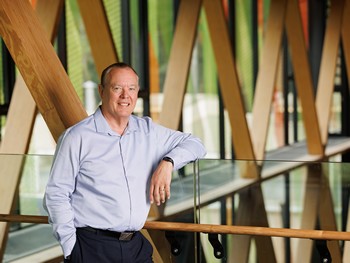Unlocking the value of processed wood

Efforts to grow our regional economies and respond to climate change were given a boost in April when the Government announced a new $57 million fund to provide support for wood processors and new research and technology that will see wood processed to create more lowcarbon alternatives to products made from fossil fuels.
Starting in July, the Wood Processing Growth Fund will provide about $3 million a year for research, business cases, pilot studies and market development around onshore wood processing projects.
The rest of the money will be available for companies wanting to build plants or co-invest in equipment and technology.
Minister of Forestry Peeni Henare made the announcement in Rotorua at the annual conference of the wood processing and manufacturing sector. For many, including Scion, it signals a step towards unlocking the sector’s potential through investment that will increase New Zealand’s onshore wood processing capacity.
By processing more logs onshore, the sector can produce more high-value wood products like sawn structural timber and engineered wood for projects, including sustainably driven multistorey buildings. It’s these timber products that store carbon for a long time and delay carbon dioxide being released back into the atmosphere. Onshore processing also produces residues that can be made into low-carbon biofuels and other high-value biobased products. This compares to the large amounts of logs currently exported long distances overseas full of water. Not only is the water not wanted at the destination, the wood deteriorates due to the water content and the time taken to get to processing.
As a Crown Research Institute that’s focused on harnessing the power of forests to support New Zealand’s transition to a circular bioeconomy, we applaud the announcement and look forward to working with our industry and iwi partners to turn this vision into a reality. By producing more high-value products onshore, the forestry sector can actively support New Zealand’s commitments to decarbonise our economy. These investments will deliver better outcomes for the regions through increased jobs and ensure a more productive and sustainable future that we can all benefit from.
We’ve long held the view that there is value in forestry and fibre not simply for the ability of trees to capture carbon. There are considerable economic opportunities provided by plantation forests when they are well managed, rotated and harvested. By making use of the whole tree after it’s harvested, including its residues, we have the ability to extract new value through the manufacturing of wood-derived products that become substitutes for those made from fossil fuels. Timber is a carbon-friendly alternative used in construction but, as part of a more sustainable future for New Zealand, we will require fuels, packaging, biochemicals and pharmaceuticals to be sourced from trees and fibre as well.
As a country, if we’re serious about meeting our net zero carbon goals by 2050, we must act with greater urgency and use the scale of our renewable forests to produce low-emissions materials and fuels. While growing trees for carbon sequestration will always have its place as part of efforts to mitigate climate change, we’ll accelerate our progress much faster by reducing our dependence on fossil fuels and creating renewable alternative products that leave a greener footprint.
At Scion, our research, innovation and development of new technology is committed to helping New Zealand meet these objectives. This issue of Scion Connections highlights some of our most recent activity and shows the benefits that come from partnerships and the sharing of ideas. The solutions to climate change won’t be achieved by working in silos. We’re committed to working across the forestry sector, with government and iwi to lead the transition to a circular bioeconomy so the environment, economy and communities can prosper.

Dr Julian Elder
Chief Executive
